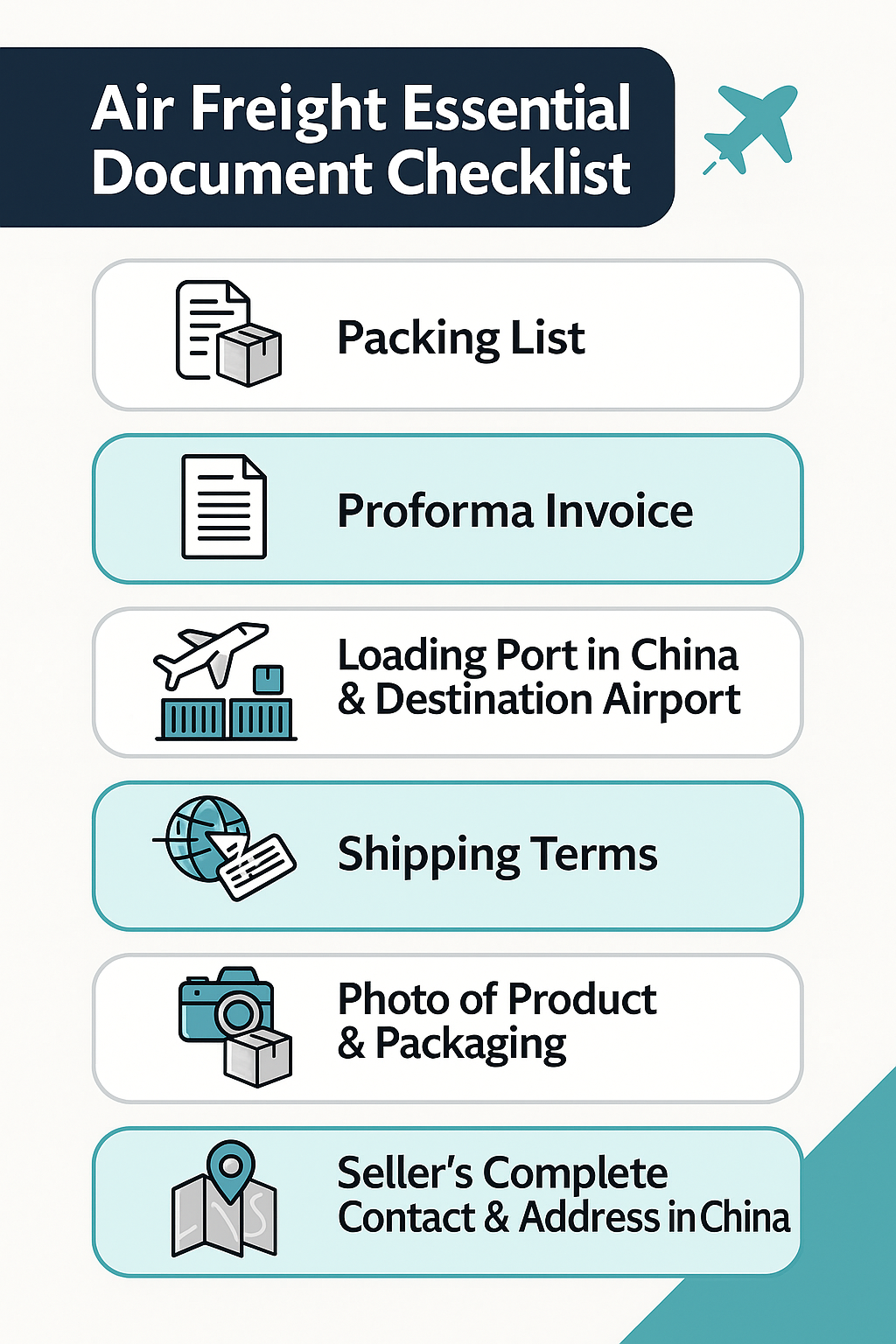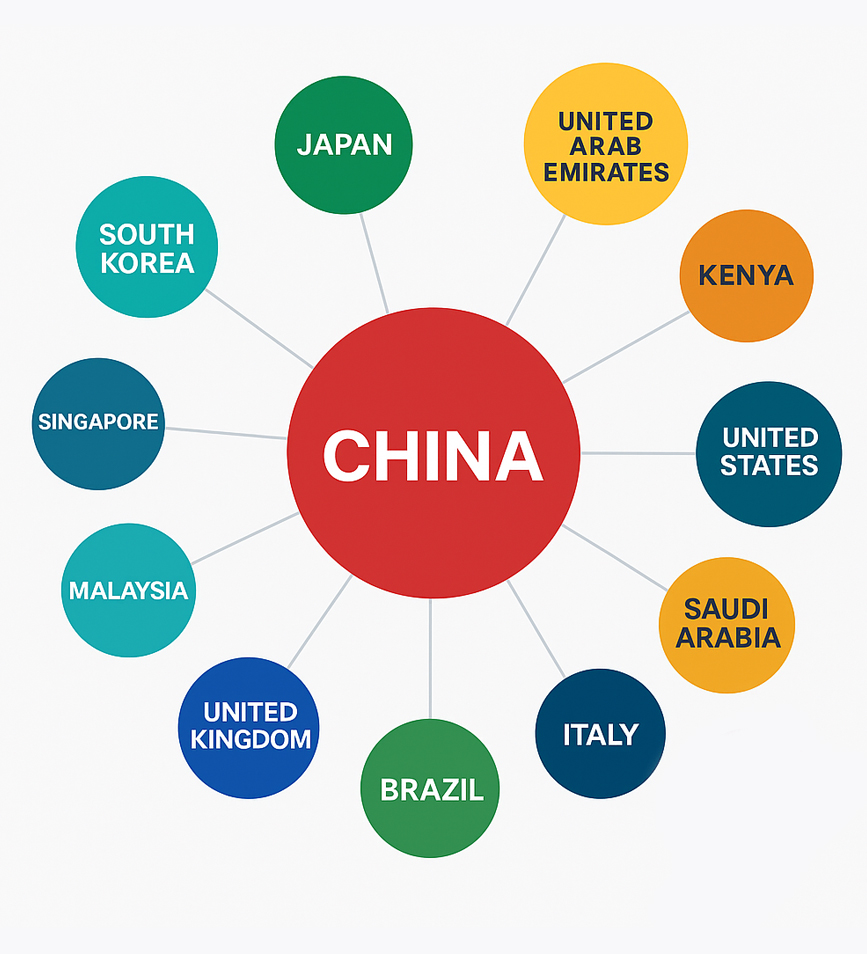- Location: A1403-79, Futian, Shenzhen, China
- Mail: sale@ddpch.com
Manage and streamline operations across multiple locations, sales channels, and employees to has improve efficiency and your bottom line.
- A1403-79, Innovation Plaza, Futian, Shenzhen, China
- +86 18025405624
- Sale@ddpch.com
- https://ddpch.com
Trucking freight
Trucking Freight from China offers fast, cost-effective delivery to Europe and Russia. DDPCH ensures reliable transport from major Chinese cities with seamless logistics
We Ship Almost Anywhere
We handle cargo from China to many countries with full logistics coordination illnesses from concussions.
Clear Prices, No Surprises
All costs are clearly listed with no unexpected charges or unclear terms
Quick and Smooth Delivery
From pickup to final destination all steps are managed with speed and accuracy
Table of Contents
Why use Road Freight from China?
If you are looking for a shipping option that is cheaper than air freight and faster than sea freight from China, then road freight is your best choice. Well, finding the right shipping method can be tricky especially for first-time importers, but trust us, road freight services are great alternative when both time and cost matter to you.
Using road freight makes things easier for you with faster transit times and lower costs, especially for nearby regions like Asia and areas where land border crossings are available, like Europe and the Middle East. That’s why DDPCH is here to make your road freight shipping simple, providing clear shipping costs, estimated transit times, and full guidance on documents and the entire process.
So, stay with us until the end of this article, and you will see why road freight from China is the perfect balance when you're stuck choosing between air freight and sea freight.
Keep reading to find out why many of our customers choose air freight for their shipping needs from China.
Why use Air Freight from China?
Air freight is the fastest way to ship from China, making it ideal for urgent and fragile goods up to 500 kilograms. If speed and security matter most to you, then air cargo is the right choice. Just keep in mind that it comes at a higher cost compared to other shipping methods.
From our experience, many of our customers prefer air freight because it ensures their packages arrive on time and in good condition. This means there is a low chance of delays, lost shipments, or damage during transit.

How much Road Freight cost from China?
The cost of using road freight depends on a few main factors like the shipment size, shipment type, road conditions, border fees, distance, and the route it takes from China. Think of it like booking a delivery service within your hometown, the shorter trips cost less, while longer ones with heavier goods will be more expensive.
To give you a better idea of the cost of road freight, we have provided estimated prices for your reference. For an exact quote, please contact our DDPCH sales team.
| From/To | United Kingdom | Russia | Sweden | Vietnam | Uzbekistan |
|---|---|---|---|---|---|
| Shanghai | USD 8250 | USD 6100 | USD 7500 | USD 2090 | USD 5110 |
| Shenzhen | USD 7600 | USD 5575 | USD 7000 | USD 2250 | USD 4800 |
| Guangzhou | USD 7890 | USD 5850 | USD 7260 | USD 4900 | USD 4990 |
| Xi’an | USD 8570 | USD 6200 | USD 7685 | USD 5100 | USD 5185 |
| Chongqing | USD 8100 | USD 6145 | USD 7400 | USD 5250 | USD 5350 |

How long Road Freight takes from China?
Wondering how long road freight takes from China? Based on our experience with customers, shipping time depends on distance, route, border processes, and road conditions. Some shipments arrive in a few days, while others take weeks. To help you plan better, we have listed estimated transit times so you know what to expect.
| Origin City in China | Road Freight Transit Time to Asia | Road Freight Transit Time to Europe |
|---|---|---|
| Shanghai | 7-10 days | 14-18 days |
| Shenzhen | 6-9 days | 15-20 days |
| Guangzhou | 7-10 days | 14-19 days |
| Xi’an | 8-12 days | 16-22 days |
| Chongqing | 7-11 days | 15-21 days |
| Tianjin | 8-13 days | 16-23 days |
| Lianyungang | 9-14 days | 17-24 days |
| Harbin | 10-15 days | 18-26 days |

How to track your cargo for Road Freight?
To track your road freight from China, use the road freight tracking system of your chosen carrier. Enter your tracking number on their website for real-time updates. Please contact DDPCH customer support if you need further assistance.
| Carrier | Tracking Number Format | Example | Tracking Link |
|---|---|---|---|
| SF Express (SF Holding) | 12 Digits | 123-456-789-012 | Track Here |
| Sinotrans Limited | Letters + Numbers (varies) | Depends on shipment | Track Here |
| COSCO Shipping | 11 Characters (4 letters + numbers) | COSU1234567 | Track Here |
| Kerry Logistics Network Limited | Varies | Depends on shipment | Track Here |
| Shenzhen Focus Global Logistics Corporation | Varies | Depends on shipment | Track Here |
| TJ China Freight | Varies | Depends on shipment | Track Here |
| Kintetsu World Express, Inc. | Varies | Depends on shipment | Track Here |

Main Documents for Road Freight Shipping
Thinking about shipping your goods with our road freight service from China? If yes, make sure to have these basic documents and details ready.
| Document | Purpose |
|---|---|
| Packing List | Lists quantity, weight, and size of each item in the shipment |
| Proforma Invoice | Shows shipment value for customs clearance |
| Seller’s Contact & Factory Address | Needed to arrange pickup from the supplier |
| Consignee’s Delivery Info | Ensures accurate final delivery (name, address, phone) |
| Shipment Type | Identifies cargo as general, fragile, or hazardous |
| Packaging Type | Describes packaging (cartons, pallets, crates, etc.) |
| Product & Packaging Photos | Verifies condition and prevents misunderstandings |
| MSDS or DGM Report | Required for sensitive or hazardous items to ensure safety and compliance |

Simple Steps for Road Freight from China
Shipping your goods by road freight from China is easy with DDPCH. We handle everything smoothly and on time, ensuring your shipment moves from the seller’s factory to your doorstep without hassle from your side.
Here’s a simple guide to how the shipping process works with DDPCH:
| Step No. | Road Freight Shipping Stage | Process Overview | Key Parties Involved |
|---|---|---|---|
| 1 | Get a Freight Quote from DDPCH | Contact DDPCH sales team to receive the best road freight rates. | You + DDPCH Sales Team |
| 2 | Confirm Your Shipping Order | Approve the quote and confirm with DDPCH to initiate the shipping process. | You + DDPCH Sales Team |
| 3 | Coordinate Shipment with Seller | DDPCH verifies shipping details and arranges goods transfer to the warehouse. | Seller + DDPCH |
| 4 | Handle Export Customs Clearance | DDPCH takes care of customs documentation and export fees in China. | Customs Authorities + DDPCH |
| 5 | Road Freight Transportation Begins | Goods are loaded onto trucks and start their journey to the destination. | Truck Freight Company + DDPCH |
| 6 | Manage Import Customs Clearance | DDPCH arranges clearance at the destination country’s customs. | Customs Authorities + DDPCH |
| 7 | Final Delivery to Your Address | After customs clearance, goods are delivered to your specified location. | DDPCH Local Team |
FTL or LTL: Which one is better for you?
Choosing between Full Truckload (FTL) and Less Than Truckload (LTL) mainly depends on your shipment size, budget, and urgency. Here, we have a prepared a simple breakdown to help you decide which option best suits your shipping needs.
| ey Shipping Factors | Full Truckload (FTL) – Best for Large Shipments | Less Than Truckload (LTL) – Best for Small Shipments |
|---|---|---|
| Shipment Size & Space Usage | Ideal for large shipments that can fill an entire truck. | Ideal for smaller shipments that don’t require a full truck. |
| Freight Cost & Budget Considerations | More expensive as you pay for the entire truck, but cost-effective for bulky goods. | Cheaper since truck space is shared with other shipments. |
| Transit Time & Delivery Speed | Faster transit time due to fewer handling points and direct delivery. | Slower transit time due to goods consolidation and multiple stops. |
Main Stations for Road Freight from China
Choosing the right station can impact the cost and transit time when shipping goods from China. These stations serve as major transportation hubs where trucks load and unload shipments before heading to your country. That’s why we have put together a list of key road freight stations that connect China to various international borders:
| Station | Region | Main Route Connection |
|---|---|---|
| Khorgos | Xinjiang | Europe, Central Asia via Kazakhstan |
| Alashankou | Xinjiang | Europe and Central Asia |
| Manzhouli | Inner Mongolia | Russia |
| Suifenhe | Heilongjiang | Russia |
| Ruili | Yunnan | Myanmar, Southeast Asia |
| Mohan | Yunnan | Laos and Asia |
| Pingxiang | Guangxi | Vietnam |
| Dongxing | Guangxi | Central Asia, Kyrgyzstan |
| Erenhot | Inner Mongolia | Mongolia |
| Turgart | Xinjiang (high-altitude) | Kyrgyzstan, Central Asia |

Which countries have road freight service from China?
By this time, you might be wondering if you can use road freight transport from China to your country, right? Well, no worries! We’ve put together a list of countries where this service is available. If you don’t see your country below but are still curious if it’s possible, just reach out to the DDPCH sales team, we will check it for you.
| Region | Countries with Road Freight Connectivity |
|---|---|
| Europe | Germany, United Kingdom, France, Russia, Netherlands, Poland, Italy, Spain, Belgium, Czech Republic |
| Central Asia | Kazakhstan, Kyrgyzstan, Uzbekistan, Tajikistan, Turkmenistan |
| South Asia | Pakistan, India, Bangladesh |
| Southeast Asia | Vietnam, Laos, Myanmar, Thailand, Malaysia |
| Middle East | Turkey, Iran |

Pros and Cons of Road Freight Service
By this time, you might be wondering if you can use road freight transport from China to your country, right? Well, no worries! We’ve put together a list of countries where this service is available. If you don’t see your country below but are still curious if it’s possible, just reach out to the DDPCH sales team, we will check it for you.
| Pros of Road Freight | Cons of Road Freight |
|---|---|
| Cost-effective for short distances | Limited to certain regions (mainly Asia and Europe) |
| Faster than sea freight for nearby countries | Higher costs for very long distances |
| Flexible routes to non-port areas | Limited load capacity compared to sea or rail |
| Easier customs clearance with trade partners | Potential border delays due to customs inspections |
| Suitable for direct door-to-door delivery | Affected by weather and road traffic conditions |

Shipmern/Year
Why choose DDPCH for Road Freight?
Shipping by road from China is simple, affordable, and hassle-free with DDPCH. We take care of customs clearance, paperwork, and tracking, so you don’t have to worry. Whether you are shipping small parcels or large cargo, we offer fast, secure, and cost-effective solutions.
Our 24/7 customer support is always ready to assist with any questions or issues. With clear pricing and reliable service, we make sure your goods arrive safely and on time. No hidden fees, no delays, just smooth delivery. Get in touch today with DDPCH team and let’s move your shipment with confidence.
- 40+ Expert Staff
- 10+ Years Experience
- 3+ Offices China
Destination Country
Don’t Believe Us? People Talk About It
Here you can read what our clients have shared about their shipping experience and cooperation with our team.
"As an electronics importer, I need a freight forwarder who understands handling fragile shipments. DDPCH has been exceptional in ensuring my goods arrive safely and on time."

Kristin Watson
"I needed a reliable freight forwarder for my Amazon FBA business, and DDPCH exceeded expectations. They handled everything from customs clearance to final delivery with perfection!"

Merry Jiucy
"We’ve been using DDPCH for our bulk shipments, and their service has been flawless. They ensure timely deliveries and provide regular updates, which is crucial for our operations"

Jacob Jones
Got Any Questions?
The transit time depends on the distance, customs clearance, and road conditions. Generally, road freight takes 7-26 days depending on the destination.
Road freight is cheaper than air freight but can sometimes be more expensive than sea freight for long distances. It is a cost-effective option for short to medium-haul routes.
Yes, most freight carriers provide a tracking number that allows you to monitor your shipment in real-time through their official websites.
The essential documents include Packing List, Proforma Invoice, Seller’s Contact Details, Consignee’s Delivery Information, and MSDS for hazardous goods if applicable.
Road freight is ideal for shipments to Europe, Central Asia, South Asia, and Southeast Asia, with major trucking routes to Germany, Russia, France, Vietnam, and Turkey.
FTL is best for large shipments (over 15 cbm) that require an entire truck.
LTL is better for small shipments (under 15 cbm) that share truck space with other cargo.
Costs depend on shipment size, weight, destination, border fees, road conditions, and the number of stops along the route. For an accurate quote, contact DDPCH.